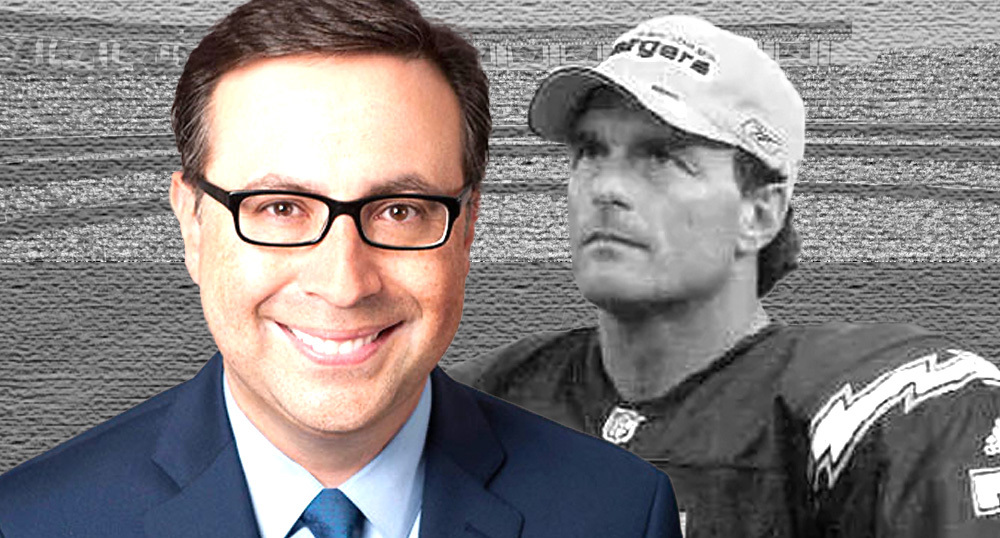There’s been a wild amount of discussion about Aaron Judge’s eye movement during an eighth-inning at-bat against the Toronto Blue Jays Monday, which ended with Judge hitting a home run. During that at-bat, Jays’ broadcasters Dan Shulman and Buck Martinez discussed on the Sportsnet TV feed how Judge was ‘looking at something,’ with his eyes going over to the first base side of the field.
Judge himself said after the game Monday he was looking over because of “chirping from our dugout” (following the ejection of manager Aaron Boone earlier in the at-bat). He then said ahead of Tuesday’s game he has “choice words” about what Shulman and Martinez said and was “not happy about it”:
Aaron Judge said that he has some “choice words about” about the Blue Jays broadcasters insinuating that he was cheating. He declined to share them. “I’m not happy about it, but people can say what they want. I’ve still got a game to play. I’ve got things to do.”
— Bryan Hoch ⚾️ (@BryanHoch) May 16, 2023
However, Shulman and Martinez got some support from an unexpected corner Tuesday. That would be Yankees’ TV voice Michael Kay:
On Tuesday, @TheJudge44 said he was not happy with Buck Martinez and @DShulman_ESPN. @RealMichaelKay feels a little bit differently. https://t.co/5Z9i1UZvi0
— Barrett Sports Media (@BSMStaff) May 17, 2023
Here’s more from that Barrett Sports Media writeup of Kay’s Tuesday comments on his ESPN New York radio show, by Jordan Bondurant:
On ESPN New York on Tuesday, Yankees play-by-play announcer Michael Kay said it’s possible the bench was trying to tip the incoming pitch to Judge. But the way in which it was communicated isn’t against the rules.
“That’s absolutely legal. It is not illegal as long as there are no electronics involved,” Kay said. “That is a legal way to pick up a sign. The Blue Jays have to do a better job of waiting til the last moment to set up and where the pitch is going to be.”
Kay said of Shulman and Martinez that he respects both of them. He didn’t seem to think they were trying to accuse Judge of cheating.
“I don’t blame Dan Shulman or Buck Martinez. They see one of the greatest players in baseball, his eyes darting, so they just brought it up.
Here’s what Shulman and Martinez said:
"You don’t wanna go throwing allegations around without knowing, but…"- Dan Shulman
"Once again, he's looking at SOMETHING, then the next move is that powerful swing, and he blasts one to center field. I've not seen that before with him. I've not ever seen that."- Buck Martinez https://t.co/7agU7wCwFt
— Awful Announcing (@awfulannouncing) May 16, 2023
The key to this discussion is that sign-stealing, and other forms of pitch-tipping, are not fully banned by MLB. As baseball historians Dan Levitt and Mark Armour discussed in their 2022 book Intentional Balk: Baseball’s Thin Line Between Innovation and Cheating, MLB sign-stealing controversies date back to at least the Philadelphia Phillies in 1899 (with binoculars in center field and a buzzer system). But that book also indicates how for much of baseball’s history, there was no specific rule against sign-stealing, and even pushback from league officials against those who reported it.
That’s changed recently, but there are still important exceptions. 1961 saw the National League ban the use of a “mechanical device” to steal signs, and 2001 saw a MLB memo stating teams couldn’t use electronic equipment for in-game communication, specifically referencing sign-stealing. The rules have since been tightened further, and the electronic equipment portion has featured in most of the recent controversies around this, including with the Houston Astros, the Boston Red Sox, and the Yankees. But there are still ways to figure out what pitch may be coming without electronic aids, and to have players or coaches relay them to the batter. And as Ken Rosenthal writes at The Athletic, MLB’s current rules specifically allow that, as long as it’s from “their own unaided observation” on the field rather than from the dugout:
The Major League Baseball Regulations, a copy of which was obtained by The Athletic, prohibit the communication of signs or pitch information from the dugout. The introduction of PitchCom, which enables direct communication between the pitcher and catcher, has made sign stealing all but obsolete. But the regulations, which are updated every year, state clearly that a coach or baserunner on the field can relay other tells.
“During a game, no club personnel may communicate in any manner the opposing team’s signs or pitch Information to a batter, baserunner or coach on the field,” Regulation 1-1(B) states “The only exception to this rule is that a baserunner or coach on the field who identifies an opposing club’s signs or pitch information through his own unaided observation of the pitcher, catcher or opposing team’s dugout may communicate that information to the batter or another on-field coach.
“‘Pitch Information’ means any information about the type or location of an incoming pitch, or any cues of the pitcher that can help a batter identify information about a pitch (e.g., ‘pitch tipping’ information).”
And as Rosenthal writes there, multiple Jays’ sources told him pitcher Jay Jackson was tipping his slider with his grip, with Yankees’ first base coach Travis Chapman able to observe that. Jackson also told Rosenthal his team told him he was tipping pitches, but with his delivery timing rather than his grip. And Chapman relaying that to Judge through hand signals would be, as Rosenthal writes, “perfectly permissible behavior under Major League Baseball rules.” That’s not just permissible; it’s long been a known and accepted thing with baserunners (which has been reduced by the shift from catcher hand signals to PitchCom), and while it’s less known with coaches, the rules make it clear that’s allowed as well. (The one point of debate there is about Chapman’s positioning outside the coaches’ box, which the Jays complained about. But that’s rarely enforced, and it’s possible Chapman could have relayed this even from the box.)
Overall, Kay’s support for the comments from Shulman and Martinez is notable. That’s especially true with him being the TV voice of the other team, and with him making these remarks on a New York radio show amidst criticism for Shulman and Martinez from Yankees’ fans and some media. And the real key point Kay hits is with the “It is absolutely legal”; under MLB’s rules, what seems to have happened here does seem to be that “perfectly permissible behavior.” And on that front, it’s notable that Shulman and Martinez did not specifically say Judge was doing anything wrong; they noted his unusual behavior, which made sense for them to do, and they did not specify where he was looking (if it had been to the dugout rather than to the first-base coach, that would have been a violation of those above MLB rules).
This has become a particularly hot-button discussion for something allowed under MLB rules, but there are some reasons for that. As Armour and Levitt wrote, sign-stealing of any kind has always been controversial, even during the period where there were no official bans on it. Levitt told AA last year that the divide between the perception of sign-stealing and the rules on it has been part of what’s led to the overall “controversy and chaos” on that issue over the years:
“What I didn’t realize, and was fascinating, was there was actually no rule against sign-stealing, despite the fact that everybody felt it was illegal. Otherwise, why would you hide it and deny it? But there was not actually a rule against it, which, on our other theme, that leads to controversy and chaos when you have something people believe is wrong and you can’t really enforce it.”
And that ties into another important angle here, Judge’s reaction. It’s interesting that Judge’s own response here has not been “I was getting signs in a legal manner from the first base coach,” but “I was kind of trying to see who was chirping in the dugout.” That could be true, but it also possibly opens him up for more criticism for him to say he was looking at the dugout: as mentioned above, it is banned for anyone other than baserunners or on-field coaches to communicate signs to a batter. It’s also interesting that he’s chimed in with the “choice words” remark about Shulman and Martinez, and that he’s done so without specifically indicating what he thought was wrong with their commentary.
Sign-stealing/pitch-tipping discussion is complicated, as this all shows. And it elicits strong emotional responses from many, especially around the recent electronically-aided scandals on that front. But it’s important to remember that kinds of sign-stealing are specifically allowed, and that they fit in with similarly-allowed behavior in other games and sports, such as reading an opponent’s tells in poker or anticipating a particular football play or coverage from pre-snap alignment. With that, it’s important for the media to a. spell out what is still legal, and b. make sure they’re not accusing anyone of anything impermissible without solid proof. (Unless you’re Evan Roberts and think “Sometimes you don’t need evidence.”) And Kay (seen at top in March) did a good job of that Tuesday, illustrating both that the seeming behavior here was not banned and that Shulman and Martinez were not specifically saying it was.






